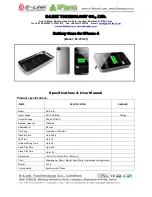
LBI-38965
32
For each site defined in the CAL.DAT file, configure the associated port on the terminal server as follows:
Server>> change port
port_no
access remote
Server>> change port
port_no
type softcopy
Server>> change port
port_no
autobaud disabled
Server>> change port
port_no
speed 19200
Server>> change service PORT_<
port_no
> <TCP
port_no
> port
port_no
telnet disabled
Server>> change port
port_no
queuing disabled
Server>> change port
port_no
flow control disabled
TCP port_no is the value defined in CAL.DAT for a particular site.
EXAMPLE:
Assume that the file CAL.DAT has the following two site entries: System Manger site 2 is connected to port 3 on the
distribution panel, and System Manager site 10 is connected to port 6 on the distribution panel.
SITE.02.PASSWD
SITE02
SITE.02.IP
147.117.37.10
#Terminal server IP address
SITE.02.PORT
5002
#TCP port_no used for site 2
SITE.10.PASSWD
SITE10
SITE.10.IP
147.117.37.10
SITE.10.PORT
5010
#TCP port_no used for site 10
Inserting the information below would configure the terminal server for the values shown above.
Server>> change port 3 access remote
Server>> change port 3 type softcopy
Server>> change port 3 autobaud disabled
Server>> change port 3 speed 19200
Server>> change service PORT_3 5002 port 3 telnet disabled
Server>> change port 3 queuing disabled
Server>> change port 3 flow control disabled
Server>> change port 6 access remote
Server>> change port 6 type softcopy
Server>> change port 6 autobaud disabled
Server>> change port 6 speed 19200
Server>> change service PORT_6 5010 port 6 telnet disabled
Server>> change port 6 queuing disabled
Server>> change port 6 flow control disabled
After completing the configuration, reconnect the Ethernet LAN connection to the terminal server. If a second terminal
server is installed, repeat the procedure above.
















































